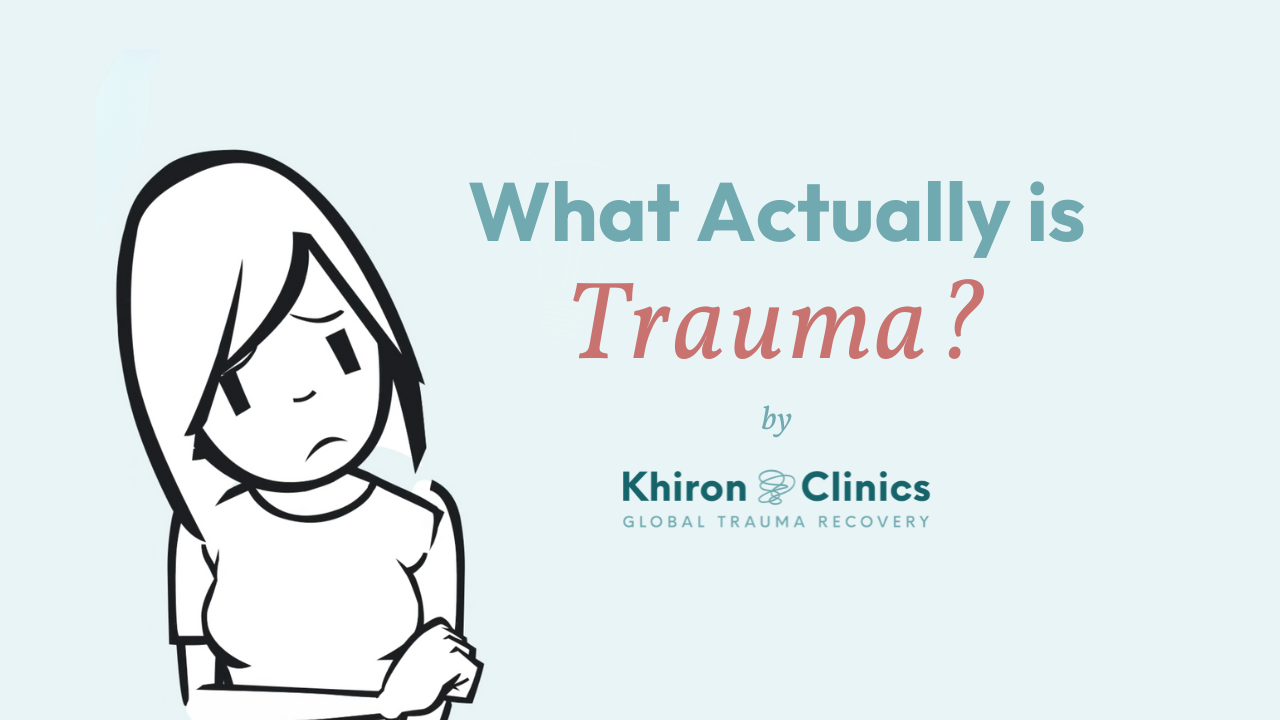Relief From Anxiety
Understanding Trauma’s Role and Our Treatment Approach
Learn more about anxiety, its relationship with trauma, and Khiron Clinics’ novel approach to treating it. If you are struggling with irrational fear, panic, worry or an overwhelming and persistent sense of unease, you may be suffering from anxiety. We are here to help.
At Khiron clinics, we see mental health issues as manifestations of unresolved trauma that leads to a dysregulated nervous system.
How Stress Can Develop into Anxiety

Everyone feels stress at times in their lives. Stress is essentially a result of pressure from within, from others, or from the environment that we exist in. When stress is prolonged, it can develop into anxiety.
We naturally experience stress when we feel unable to cope. When stress remains in the body after the significant demands have passed, the nervous system can fail to calm down, and can become dysregulated.
Whilst some stress is helpful and can lead to productivity, prolonged stress develops into anxiety, and it can have detrimental effects on the body and mind. When we are anxious, we tend to sleep badly, experience stomach issues and lower emotional resilience. Some may drink alcohol or use other substances to cope.

What Are the Signs of Anxiety?
The main symptoms include:
- Trouble concentrating or making decisions
- Feeling irritable, tense or restless
- Experiencing nausea or abdominal distress
- Having heart palpitations
- Sweating, trembling or shaking
- Trouble sleeping
- Having a sense of impending danger, panic or doom
When symptoms persist, anxiety becomes a symptom of other related conditions, such as:
- Panic attacks
- Social anxiety
- Depression
- Phobias
- Obsessive Compulsive Disorder (OCD)
- Post Traumatic Stress Disorder (PTSD)
What Causes Anxiety?
- Work-related pressures
- Financial problems
- Health issues
- Relationship difficulties
- Major life changes
- Academic pressures
- Parenting challenges
- Environmental factors
- Lack of control

Anxiety is complex and is usually caused by a combination of factors. At Khiron clinics, we treat mental health issues as manifestations of unresolved trauma that lead to a dysregulated nervous system.

Understanding Trauma and Its Impact on the Nervous System
Trauma is a pervasive experience, with 70% of adults encountering some form of it, such as abuse, domestic violence, relationship breakdowns, crime, and neglect.
Trauma can be either a single event or a series of events over time.
The critical factor is not the event itself, but our internal response to it. As Gabor Maté aptly puts it, “Trauma is not what happens to you, but what happens inside you as a result of what happens to you.”
This internal response often involves storing trauma unconsciously, leaving it unprocessed and unhealed, and impacting our mental health later in life.

“Trauma is not what happens to you, but what happens inside you as a result of what happens to you.”
Dr Gabor Maté
The Dysregulated Nervous System
Trauma causes a dysregulated nervous system, where the body continues to react as if the traumatic event is still occurring. This persistent response keeps the nervous system in a state of heightened alert, constantly perceiving threats.
The nervous system comprises the central nervous system (brain and spinal cord) and the peripheral nervous system, which includes the autonomic nervous system (ANS). The ANS has two branches:
- Parasympathetic Nervous System: Known as the rest-and-digest system, it promotes calmness and relaxation.
- Sympathetic Nervous System: Responsible for the fight-or-flight response, it prepares the body to handle threats by increasing heart rate, blood pressure, and adrenaline production, while suppressing non-essential functions like digestion and immunity.
When trauma remains unprocessed, the body remains in a fight-or-flight state, leading to chronic stress and complex mental health issues like anxiety and depression.
To understand more about the nervous system’s role in trauma, explore our founder Benjamin Fry’s book, The Invisible Lion, here.
Treatment for Anxiety and Trauma at Khiron Clinics
Khiron Clinics specialises in nervous system-based treatments for mental health crises. Our team of expert psychologists and therapists focus on understanding and addressing the root causes of mental health issues, often linked to unresolved trauma. By identifying the source of trauma, we help clients embark on a path to recovery, addressing emotional pain and destructive patterns that other therapies have failed to treat.
Traditional therapy often uses a ‘top-down’ (cognitive) approach, focusing on thoughts influencing emotions and behaviours. At Khiron Clinics, we integrate this with a ‘bottom-up’ (somatic) approach, addressing trauma through physiological responses and bodily awareness.
This approach enhances self-awareness, regulates the nervous system, and promotes lasting healing.
Our therapeutic setting supports trauma healing, allowing clients to transfer these skills into their daily lives. This holistic approach not only reduces the effects of anxiety but also helps clients feel more in control, fostering stability and resilience.
Our Therapeutic Approach
- Bodily Awareness: Addressing trauma through understanding physiological responses and safety mechanisms like fight, flight, or freeze reactions.
- Self-Awareness and Nervous System Regulation: Enhancing self-awareness and learning to regulate the nervous system.
- Healing in Relationships: Recognising that trauma often stems from early relationships, we emphasise the importance of building feelings of safety with others, practising effective communication, recognising triggers, and developing coping mechanisms.
We work with you to understand your symptoms and help find the issues at the root of your experience, which are usually linked to unresolved trauma. Through finding the source of the issue, we are better equipped to help you on your path to recovery.
Our Recovery Roadmap
The Three-Phase Approach to Trauma Treatment
Stabilisation
This phase focuses on understanding and getting to know oneself, reducing symptoms, learning about trauma and how to self-regulate so you can stay in connection with others and the present moment.
Trauma Processing
This phase starts by fostering safety and security in the body and mind, allowing individuals to recognise triggers, manage emotions, and make mindful choices. With therapist guidance, they learn to release stuck trauma and emotions by discharging incomplete defensive responses, while also rebuilding compromised life skills such as setting boundaries and building new connections in safe relationships.
Integration
This phase is where we support clients to take their newfound regulation, self-awareness and knowledge out into the real world so that they can apply the skills that they have developed in treatment in their daily life.

Download the Brochure
Discover Our Innovative Trauma Recovery Pathway
Next Steps
We Are Here to Help You Find the Path to Effective, Long Lasting Recovery.

Talk to Us
Get in touch with us and share your story if you feel comfortable with someone who will listen. Our team are always here to help.

Book an Initial Consultation
Meet with a senior member of our clinical team and get insights into the root causes of your issues, plus a written summary and treatment recommendation.

Download Our Brochure
Discover our innovative trauma recovery pathway. Find out more about how we treat, what we treat, our clinics, pricing and more.







